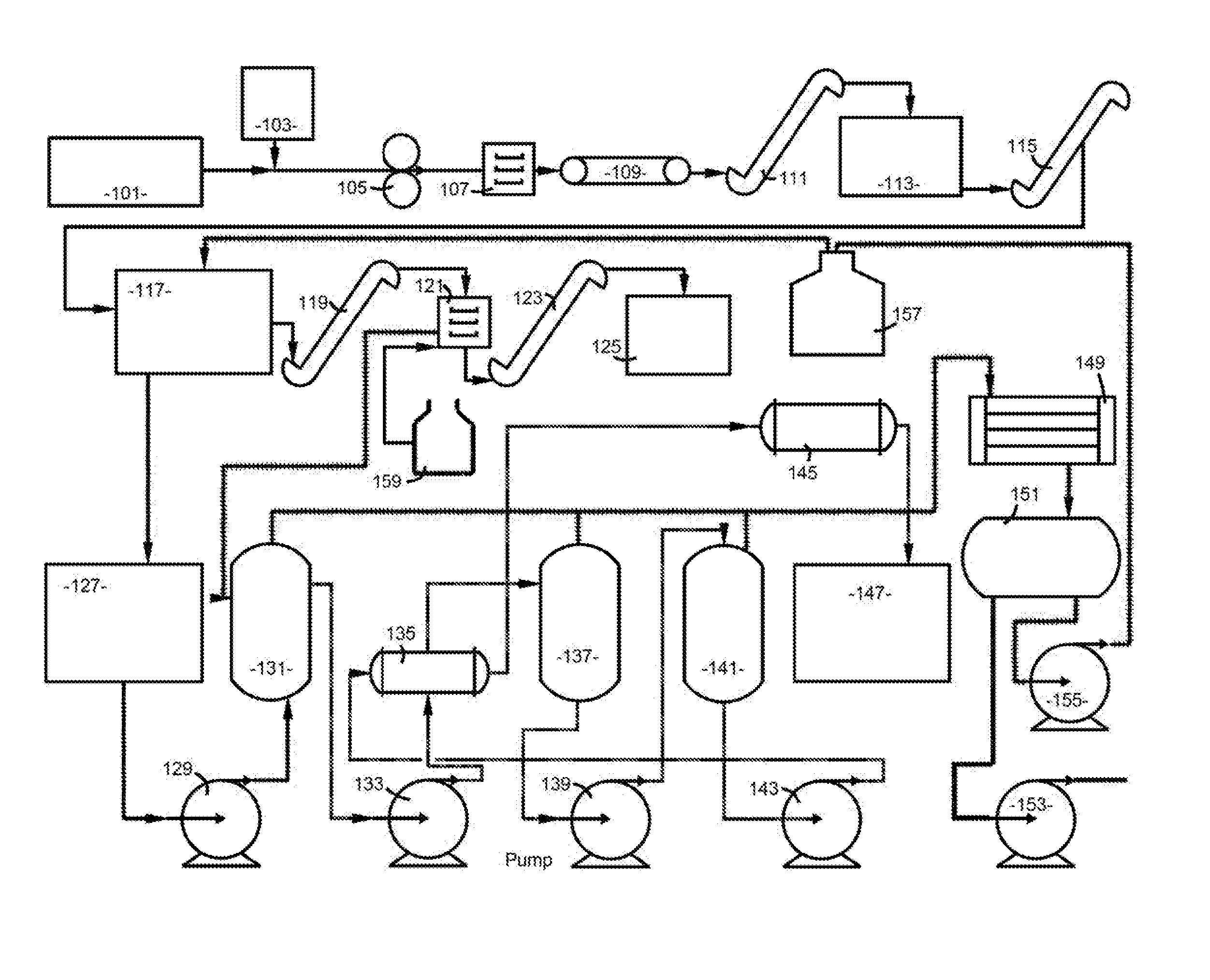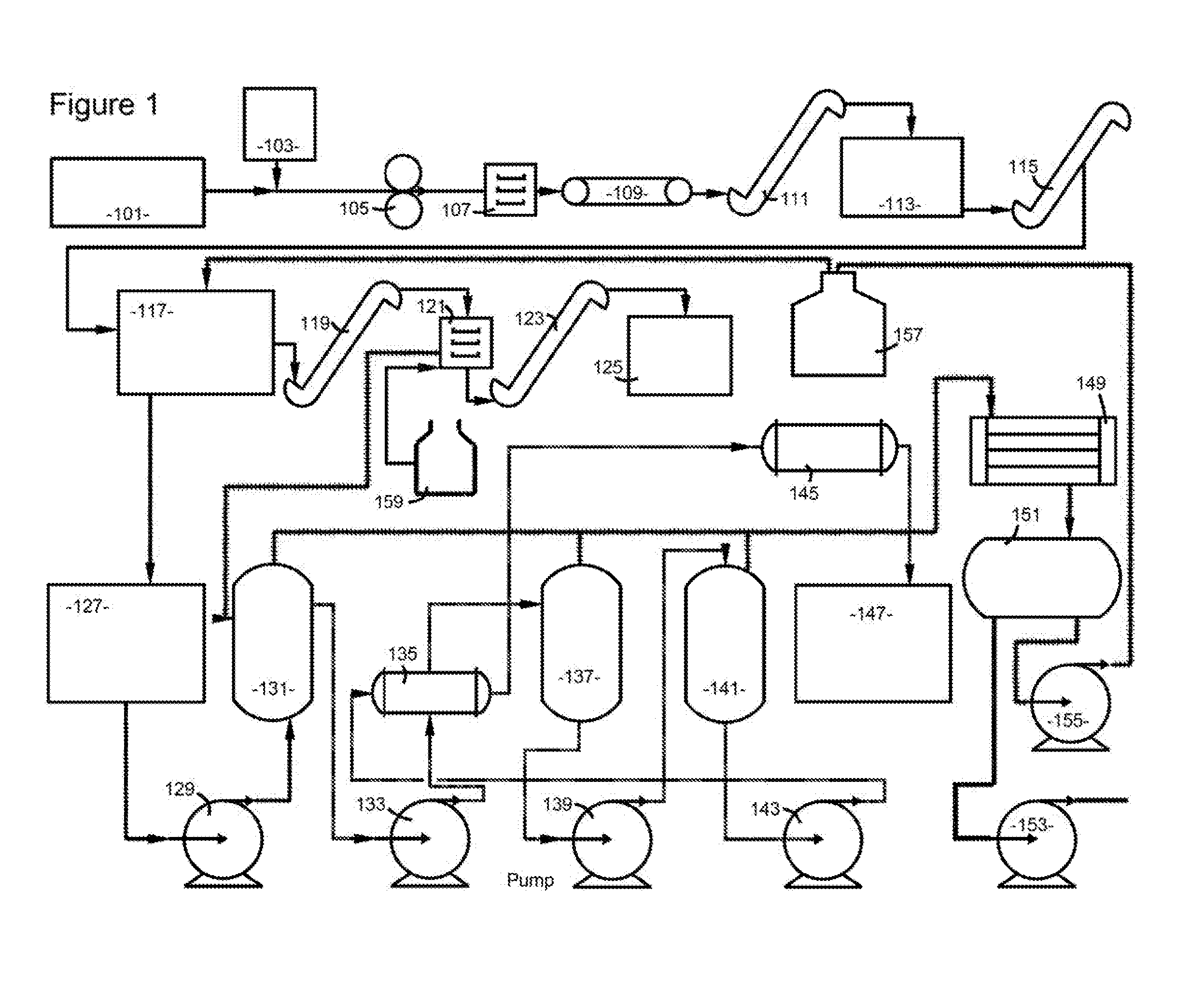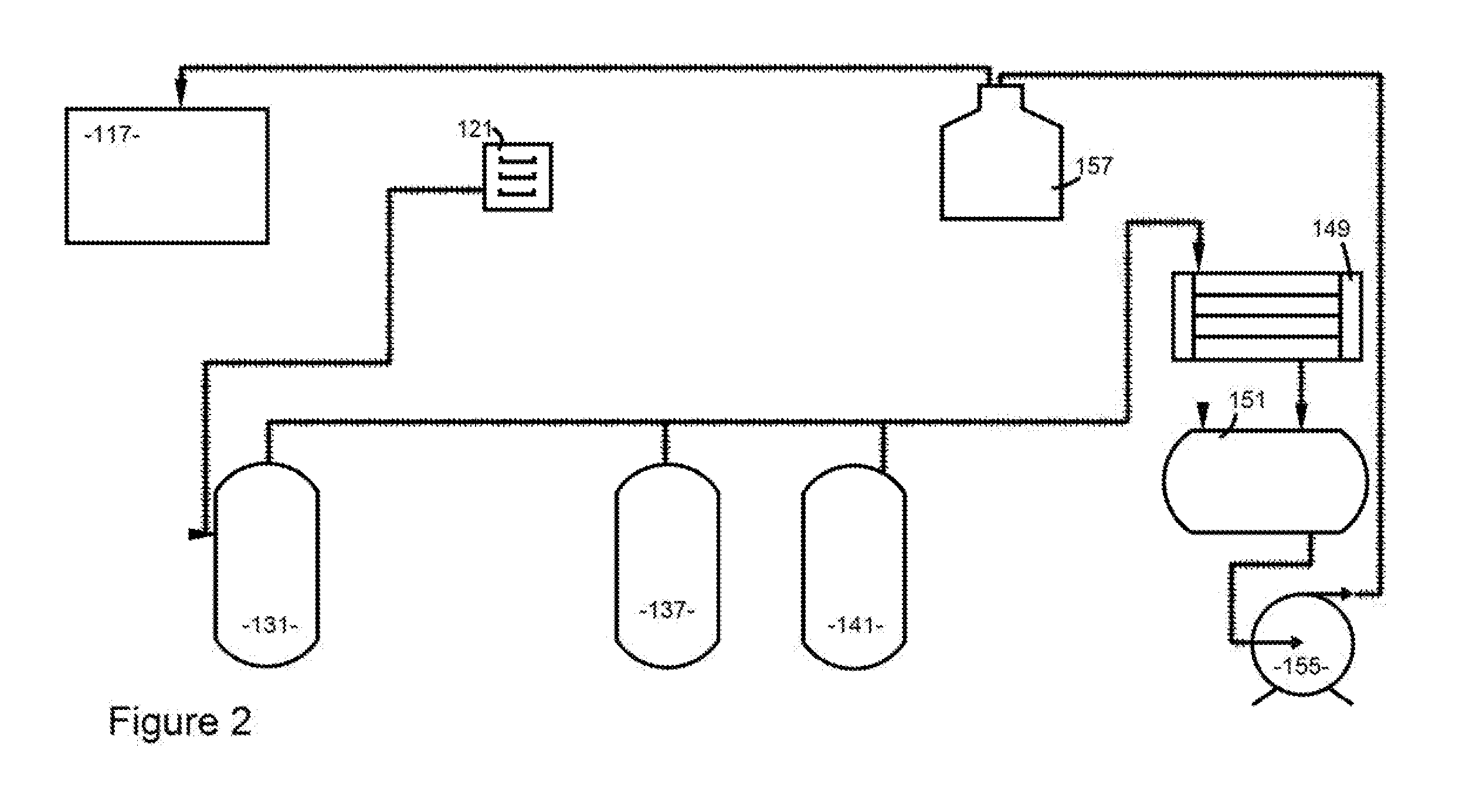Method for Reclaiming Usable Products from Biosolids
- Summary
- Abstract
- Description
- Claims
- Application Information
AI Technical Summary
Benefits of technology
Problems solved by technology
Method used
Image
Examples
Embodiment Construction
[0014]Definitions
[0015]As used in herein the term “biosolids” shall relate to the product generated from tertiary treatment of waste activated sludge as well as treated human waste.
[0016]As used in herein the term “sludge” shall relate to the product generated from municipal wastewater sludge including primary sludge, secondary sludge, treated sludge, activate sludge, as well as treated human waste.
[0017]As used in herein the term “solid” shall relate to the product remaining after extraction of the miscella from the sludge within the extractor.
[0018]As used in herein the term “fines” shall relate to the very small particles found in mining, milling, etc.
[0019]As used herein the term “miscella” shall relate to a solution of mixture containing an extracted oil or grease.
[0020]As used herein the term “DT” shall refer to a desolventizer-toaster.
[0021]As used herein the term “DTD” shall refer to a unit containing a desolventizer-toaster and dryer cooler.
[0022]As used herein the term “PO...
PUM
 Login to View More
Login to View More Abstract
Description
Claims
Application Information
 Login to View More
Login to View More - R&D Engineer
- R&D Manager
- IP Professional
- Industry Leading Data Capabilities
- Powerful AI technology
- Patent DNA Extraction
Browse by: Latest US Patents, China's latest patents, Technical Efficacy Thesaurus, Application Domain, Technology Topic, Popular Technical Reports.
© 2024 PatSnap. All rights reserved.Legal|Privacy policy|Modern Slavery Act Transparency Statement|Sitemap|About US| Contact US: help@patsnap.com










